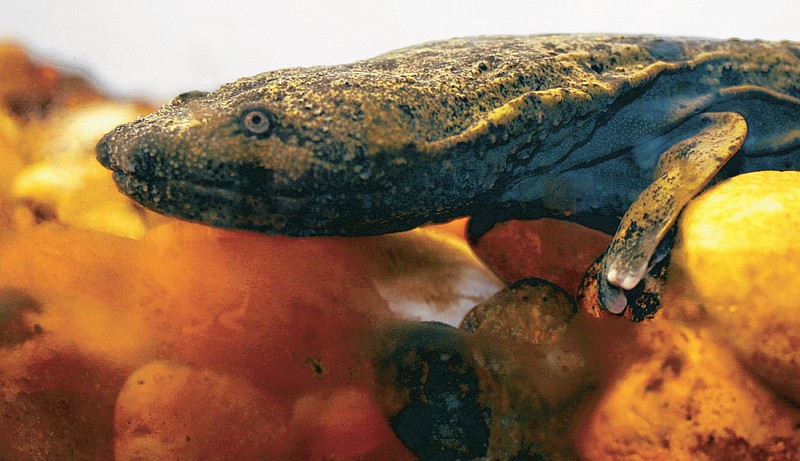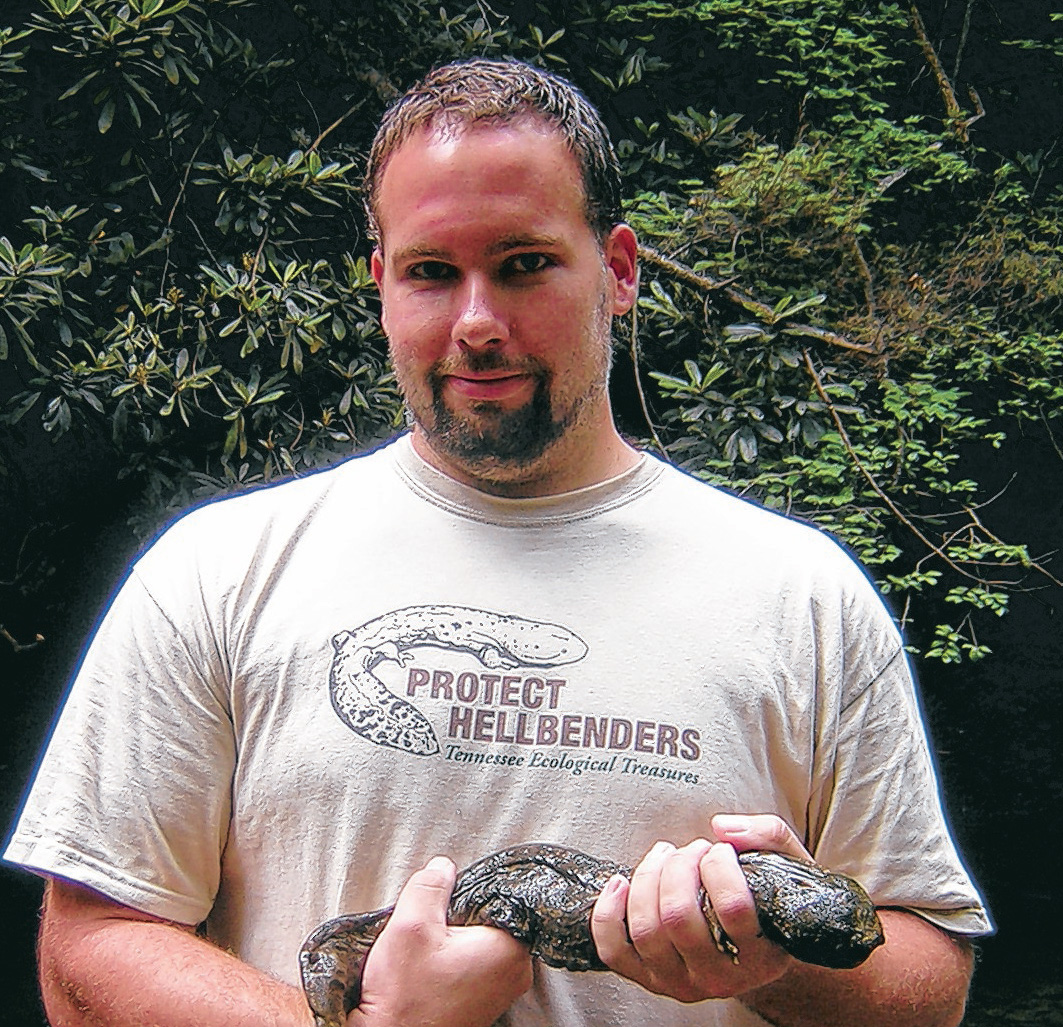In the Chattanooga Zoo, there is a little old place where hellbenders can get together. The amphibian breeding room, affectionately known as the "Love Shack," houses a state-of-the-art, 40-foot artificial hellbender stream that has been built in hopes of breeding hellbenders in captivity.
"The species have only been bred once. People have been trying to do it for 15 years and there was finally a breakthrough," says David Hedrick, lead ectotherm keeper at the Chattanooga Zoo. We are part of the body and collective that is trying to help find the variables to breed these in captivity."
The importance of learning how to breed hellbenders rests in the severe decline in populations primarily due to siltation, but also because of the cumulative effect of dams, pollution and agricultural herbicides, pesticides and fertilizers. "It's rough. There are streams that had large numbers of them 20 years ago and now there are hardly any of them," says Hedrick. "If we can nail this technology down, a few years down the road it could help us determine if we can release captively bred animals back in the wild. We can replace the species in certain areas."
The Zoo, in partnership with Lee University and Dr. Michael Freake, associate professor of biology at Lee University, conducts field work and collects important data on hellbenders, such as genetic samples and population surveys. This season, they will be doing new research - collecting water samples, straining them and analyzing the DNA samples left behind.
"You can literally detect the presence of hellbenders by taking samples of the water," says Hedrick. "It's pretty insane."
Hedrick says that the fate of the hellbender species, which is currently classified in Tennessee as "in need of management," rests solely on this type of research bent to find out exactly how many hellbenders are still in the wild.
"We need to establish populations now and figure out how they are doing everywhere so we can have baseline data so we can start the game plan on how to conserve the species in the wild. We've got to find where they live and if we just let it slide, they'll be gone," he says. "In the next 20 years - that's going to be the time frame that decides the fate of the species. That span of time and what we do in that span of time decides what happens. It all comes down to improving our rivers and streams and doing all we can to take care of them.
"It's the canary in the goldmine thing. If you see a problem with this animal, there is a problem with the water and that affects everything. That affects us."
HELP THE HELLBENDER
Take a sip of the Hellbender craft beer coming soon at Terminal Brewhouse. Part of the proceeds from sales will go toward the Chattanooga Zoo's hellbender research.
If you catch a hellbender while fishing, just remove the hook and release. If they swallow the hook, cut the line.
Don't build rock dams in streams, as the rocks are essential for many species, including hellbenders, to hide and nest.
Allow the growth of vegetation along waterways, helping to prevent soil erosion and keep the water clean.
If you see a hellbender, report the sighting to the Chattanooga Zoo at 423-697-1319 and your report will be passed along to researchers in the area.

